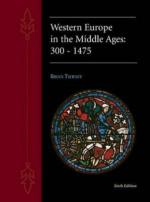|
This section contains 1,647 words (approx. 6 pages at 300 words per page) |

|
From the beginning of the Middle Ages to about the year 1000, commerce was scarce in western Europe. There were two reasons for this. First, the economy of the medieval manor was generally self-sufficient. Thus, there was usually little need—as well as little available money—to purchase or barter goods and services from outside sources. Second, there were very few large towns or cities where foreign merchants could meet with local entrepreneurs to purchase and exchange goods.
By the eleventh century, however, due in large part to an increase in Europe's population, a recognizable need for trade evolved. This, in turn, led to the growth of towns that served as trade centers and to the rise of a new socioeconomic class of people, the merchants. The following excerpt is from an anonymous thirteenth-century source. Written...
|
This section contains 1,647 words (approx. 6 pages at 300 words per page) |

|




